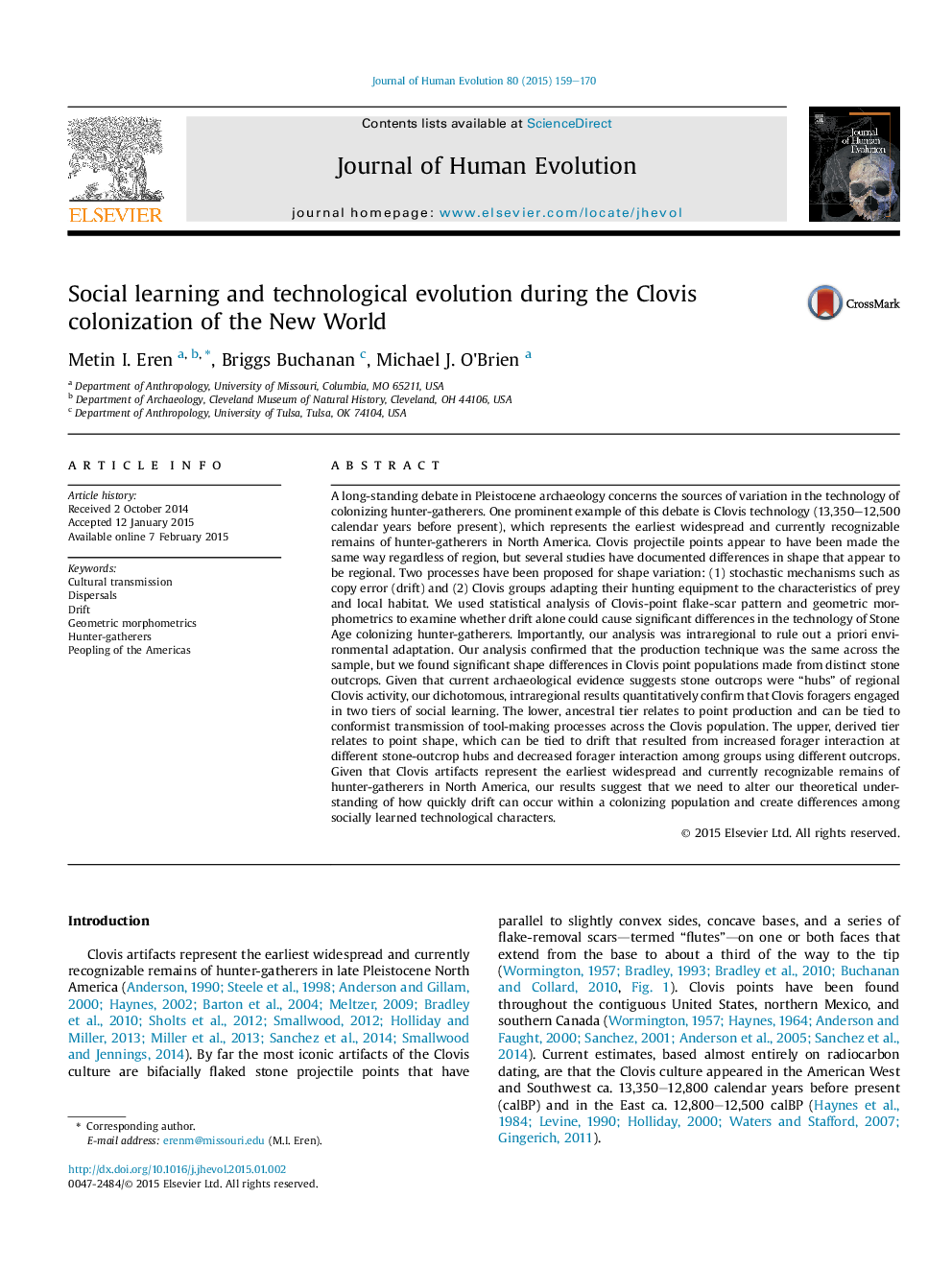| کد مقاله | کد نشریه | سال انتشار | مقاله انگلیسی | نسخه تمام متن |
|---|---|---|---|---|
| 4555933 | 1628169 | 2015 | 12 صفحه PDF | دانلود رایگان |
A long-standing debate in Pleistocene archaeology concerns the sources of variation in the technology of colonizing hunter-gatherers. One prominent example of this debate is Clovis technology (13,350–12,500 calendar years before present), which represents the earliest widespread and currently recognizable remains of hunter-gatherers in North America. Clovis projectile points appear to have been made the same way regardless of region, but several studies have documented differences in shape that appear to be regional. Two processes have been proposed for shape variation: (1) stochastic mechanisms such as copy error (drift) and (2) Clovis groups adapting their hunting equipment to the characteristics of prey and local habitat. We used statistical analysis of Clovis-point flake-scar pattern and geometric morphometrics to examine whether drift alone could cause significant differences in the technology of Stone Age colonizing hunter-gatherers. Importantly, our analysis was intraregional to rule out a priori environmental adaptation. Our analysis confirmed that the production technique was the same across the sample, but we found significant shape differences in Clovis point populations made from distinct stone outcrops. Given that current archaeological evidence suggests stone outcrops were “hubs” of regional Clovis activity, our dichotomous, intraregional results quantitatively confirm that Clovis foragers engaged in two tiers of social learning. The lower, ancestral tier relates to point production and can be tied to conformist transmission of tool-making processes across the Clovis population. The upper, derived tier relates to point shape, which can be tied to drift that resulted from increased forager interaction at different stone-outcrop hubs and decreased forager interaction among groups using different outcrops. Given that Clovis artifacts represent the earliest widespread and currently recognizable remains of hunter-gatherers in North America, our results suggest that we need to alter our theoretical understanding of how quickly drift can occur within a colonizing population and create differences among socially learned technological characters.
Journal: Journal of Human Evolution - Volume 80, March 2015, Pages 159–170
